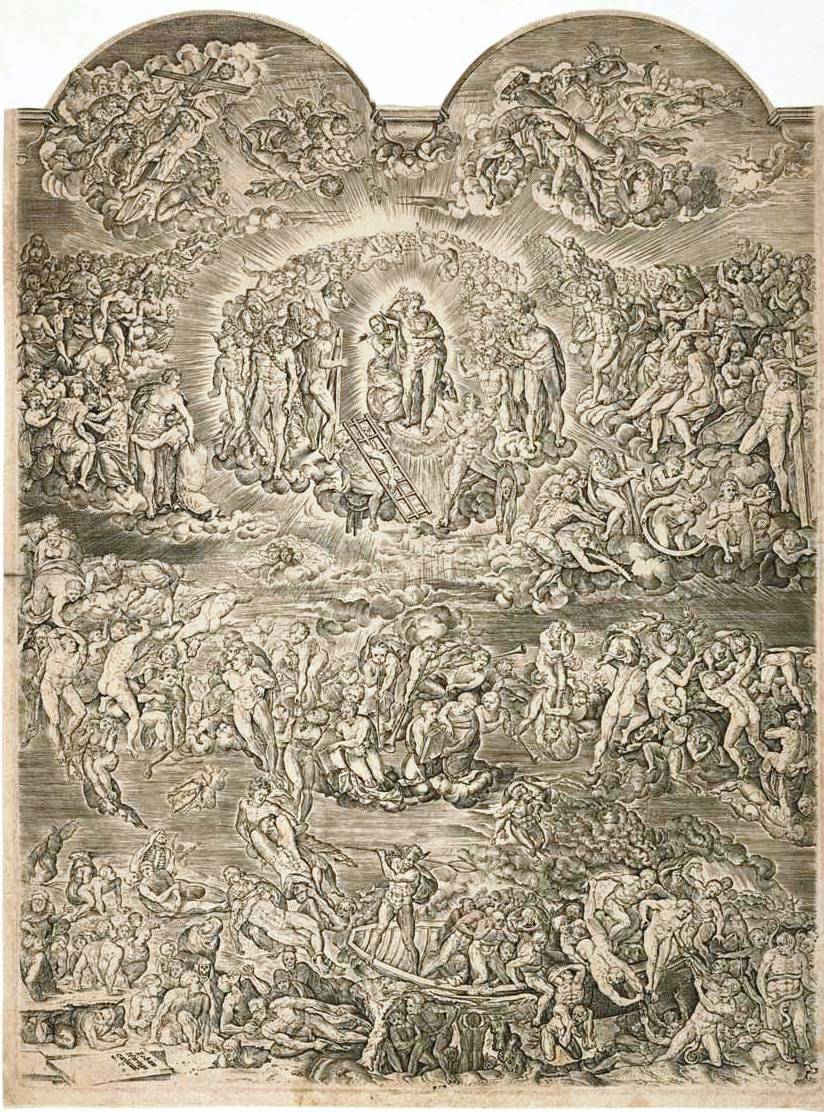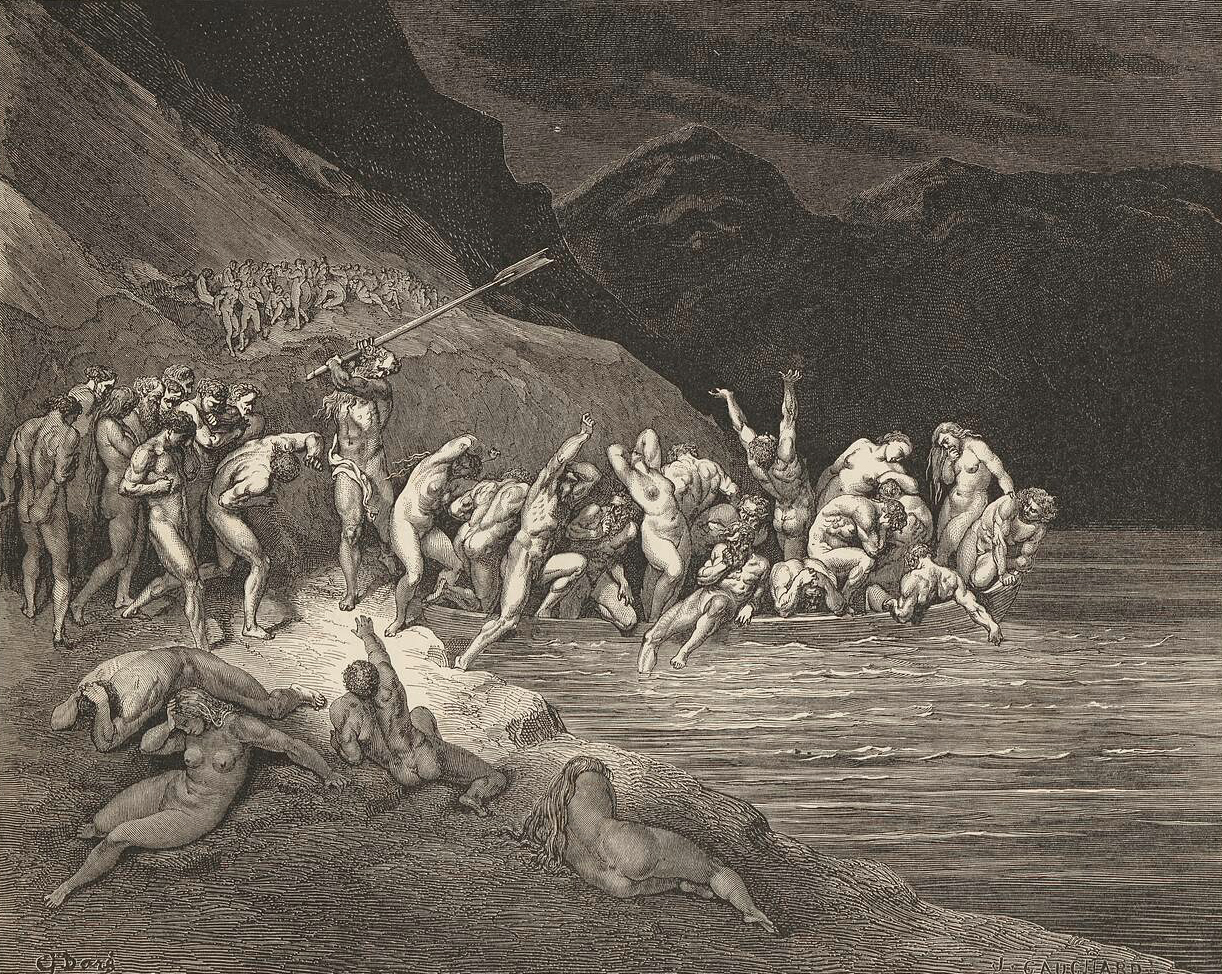Charon
Woe unto you, you wicked souls / Hope not to see Heaven. / I have come to lead you to the other shore, / into eternal darkness; into fire and into ice.’ (Inferno: III, 82-87)
In Greek mythology, Charon is the ferryman who transports the dead across the river Acheron to the underworld. Payment was required to cross; souls who were unable to pay risked wandering along the shores of the river for a hundred years. Descriptions of Charon have differed from version to version: he is variously described as a poor fisherman, a grumpy old man in rags, a cultured man or - as in Virgil’s Aeneid - a malodorous ogre. Dante describes Charon as an old man with burning, demonic eyes, who uses his oar to threaten and violently herd the souls into his boat in Canto III of the Inferno.


Dante's description of this scene became a direct inspiration for Michelangelo Buonarotti in his Last Judgement. Apocalyptic imagery is a powerful influence within the Divine Comedy, which in turn influenced the event’s depiction in art. According to the New Testament, after a person’s death, they will be judged by Christ who will decide whether they go to Hell, Purgatory or Heaven based on their behaviour on earth. In Canto VI of the Inferno, Virgil speaks of angels’ trumpets, referring to the sound which announces the coming of Christ.
Michelangelo's Last Judgement, arguably the most famous representation of the scene, is the fresco covering the alter wall in the Sistine Chapel. Michelangelo borrowed from the Comedy in his rendering of Hell in the lower right, where he depicts Charon, ferryman to the Underworld in Greek mythology, his oar raised to beat disobedient souls, as Dante describes.
The fame accorded Michelangelo's fresco meant that the same iconography of a muscular Charon with a raised oar found it's way into the work of several later artists. Take for instance Dore’s engraving below.
